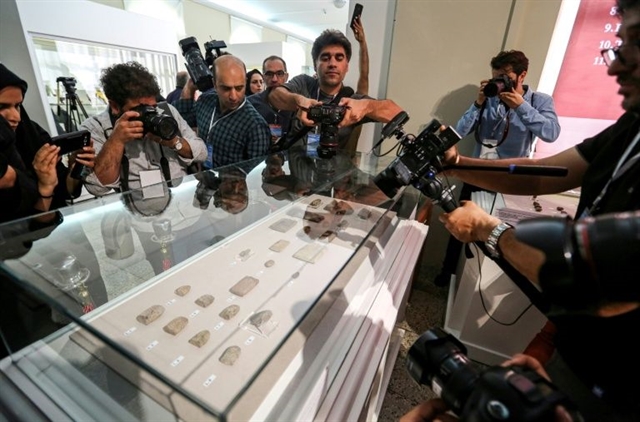 Life & Style
Life & Style


|
| The National Museum of Iran is now exhibiting around 300 cuneiform clay tablets returned from the United States after a drawn-out legal saga. — AFP/VNA Photo |
TEHRAN — The National Museum of Iran opened on Wednesday an exhibition of around 300 cuneiform clay tablets returned from the United States after a drawn-out legal saga.
Found at the ruins of Persepolis, capital of the Persian Achaemenid Empire (6th - 4th c. BC) in the south of Iran, these works belonged to a group of 1,783 clay tablets or tablet fragments returned to Iran by the Oriental Institute at the University of Chicago.
In the 1930s, the university had received on loan around 30,000 tablets or tablet fragments found at Persepolis for research purposes, Iranian media reported.
A large portion of the tablets were returned in three batches between 1948 and 2004 before their restitution was blocked by legal action initiated by American survivors of an attack in Israel in 1997 carried out by the Palestinian group Hamas.
Blaming Tehran for supporting the armed group, the plaintiffs demanded the seizure of the tablets and their sale put towards the US$71.5 million that Iran was ordered to pay in the case.
The proceedings only ended in February 2018 when a US Supreme Court decision banned the seizure of the works.
But the reimposition of US sanctions on the Islamic republic since August 2018 has complicated the return of the antiquities to Iran.
This includes some administrative "exchanges" with the US, in particular with the US Treasury, which must give the okay, head of Iranian museums Mohammad Reza Kargar said.
But, he said, "there is nothing to worry about" regarding the return of further works.
"We fought very hard to keep them safe and spent millions of dollars so that we could return them" to Iran, said Christopher Woods, head of the University of Chicago's Oriental Institute, referring to the legal fees incurred by the institute up until the Supreme Court decision.
"Hopefully we'll return the second batch much faster and it will be a much larger group," he added.
Matthew Stolper, Professor Emeritus at the Oriental Institute, emphasised the scientific interest of the works.
They helped further the understanding of "how (Achaemenid) society was organised, how basic institutions of control and support worked", he said.
"We've learned the names of some of the important people in the ruling class," he added, "but more importantly, we learned how they ruled". — AFP